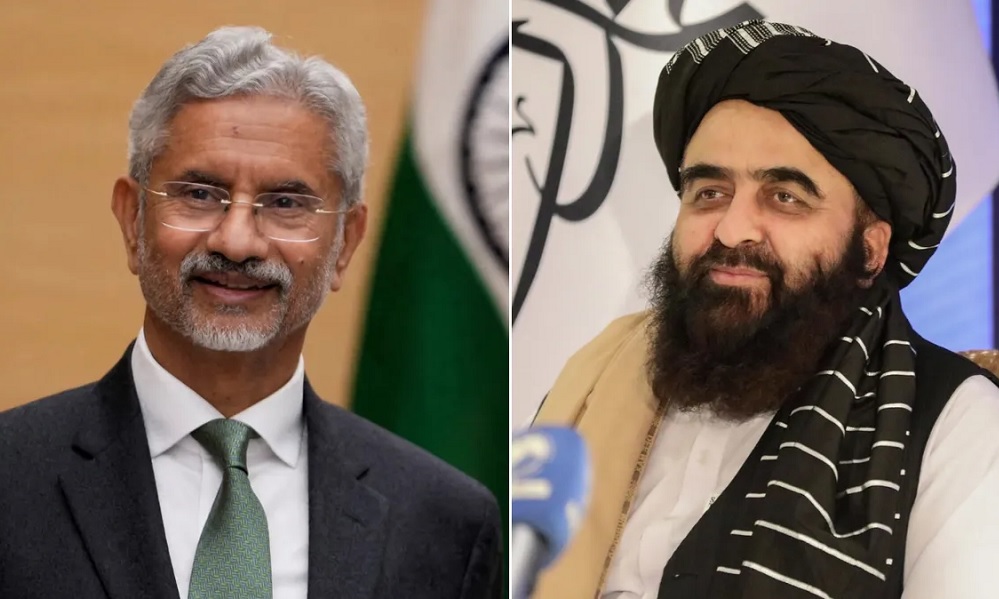The New Kind of Battlefield and Marketplace
Once referred to as a type of hidden war fought through narratives, algorithms, and codes, Fifth Generation Warfare (5GW) has evolved into a multi-national business with billions of dollars in revenue. The technologies themselves, which alter mass consciousness on the one hand in favor of maniacal individuals and pocket ballots on the other, tend to mistake the very cloud services, digital advertising networks, and global payment systems. Security and substantial funding are aligned with corporations and governments that control the flow of information, mass reaction, and the code that can be executed. This indicates that the revenue outlook is excellent and is expected to remain so in the years to come for the Pakistani digital sector.
Instead of continuing to play defense in this vague arena of war, Pakistan can consider an entirely new script instead. When the country stops viewing 5GW as a commercial export or painful inevitability, and approaches it as a new annual benefit of up to $25 billion to $40 billion by 2032.
It covers five interconnected pillars: data monetization (how agencies can find value in their information), cyber and digital freelancing (what competencies and services that businesses will need), the narrative economy (a mapping of storytelling to digital-era brand loyalty), a Digital CPEC corridor (pitting out fibre, cloud and gateway investment), and sovereign platforms that stall financial leakage (showing how local gateways seal domestic bleeding). They all come together to offer an organized playbook that provides predictable cash flow on the available digital risk.
Data Monetisation
It is said that data is the new crude oil, but in Pakistan, the raw material is exported in its raw state. In this case, Meta, Google, and ByteDance will now collect behavioral data from 130 million users and pay an invisible tax bill as a result. The broad-based revenue tax on services rendered to local accounts, such as the Digital Services Tax proposed in the European Union, would have added an estimated US$450 million to the 2024 budget. Such a distance is not very considerable, the distance between hope and survival.
The 2nd step is sovereign hosting. The short-term future needs of domestic data centers within national markets are driven by local data storage obligations on sensitive data, a sector within the marketplace that the World Bank forecasts will continue to thrive at rates exceeding 25 percent per year in South Asia.
The union of competitive energy prices with clean electricity supplied by the Indus hydro power corridor could lure data-centric giants towards Pakistan. This would, of course, have the effect of reducing latency to local users while also keeping thousands of compute jobs in the country as the ecosystem becomes secure with shore-based plants.
At the same time, the government should make extensive, anonymized data, including traffic patterns, utility consumption, and clinical data, a national asset. Non-Western data could generate more than $1 billion in annual sales of licenses to train AI models by 2028, as high demand among non-Western companies to utilize non-Western data to eliminate biases is expected globally.
New $5 to 7 Billion Exports through Cybersecurity & Digitally Employed Freelancing
Tiny Israel, with a quarter of Pakistan’s population, boasted nearly $ 13 billion in cyber sales last year. Spending the same amount as half of that figure on purchases of the same merchandise would alter the export picture in months. The first initiative is a national skills push: FHE (Fully Homomorphic Encryption) is being utilized to enhance boot camps that will certify 100,000 ethical hackers, OSINT (Open Source Intelligence) analysts, and digital forensics engineers.
Such personnel will then be able to work at security operation centers of Gulf carriers, which currently possess new fortresses, audit African fintech firms on behalf of global GAFAMs (Google, Apple, Facebook, Amazon, Microsoft), and hunt malware in Central Asian grids. In Research 2, one mid-sized System-on-a-Chip (SOC) package, enhanced with premium threat intelligence feeds, would generate up to $6 million of contracts per year.
Make just two hundred more of the same deals, and Pakistan banks an excess of a billion dollars per annum.
One way Islamabad can approach this is by considering the implementation of a Talent/Treasure Repatriation strategy, such as providing a 10-cent rebate on each dollar of certified cyber earnings, to incentivize repatriation rather than emigration. This is a small measure in itself, but it acts as a built-in insurance against income tax, permits the repatriation of funds, maintains the foreign exchange pool without any alarms around the clock, and does not necessitate new loans from lenders.
The Soft Power Money at Work for Narrative Economy $3-5 Billion
Currently, TikTok earns more money from advertising in Pakistan than the combined total of all local news sites. Three steps will be needed to fill that gap. To begin with, grassroots content production companies drawing on Urdu, Pashto, Punjabi, and street English ought to be attractive to the diaspora, which is parched for uncensored South Asian stories. A good fan base (one hundred million streams per year) can be estimated to cost about 150 million dollars in programmatic advertising and product placements.
Second, a national video-on-demand service enabled by a recommendation engine whose name we will call PTV Plus, would draw homegrown consumption out of the Grinch-like maws of Netflix and Disney. A 5 percent change in viewing time would result in a loss of approximately $250 million in subscription and advertising fees, as well as potential reclaims.
Third, the counter-disinformation blueprints must also be packaged by the information warfare units in Pakistan and be sold to the neighboring friendly countries.
In Addis Ababa, the aftermath of the most recent color revolutions is unnerving governments, and they are currently examining established doctrines of digital resiliency. Such expertise may be capable of producing a bundled consultancy in partnership with your self-proprietary software and, subsequently, charge each client half a million dollars a year, which can multiply rapidly as little new capital may be required to be provided.
Hosting and Transit Income Earned on the Digital CPEC $8-12 billion
At the unveiling of the China-Pakistan Economic Corridor, analysts envisioned a stream of trucks traversing the Karakoram Highway. That vision led to a fiber-optic and satellite spider net system linking the Arabian Sea, Central Asia, and East Africa to inland Western China by 2025. This will enable Islamabad to utilize land routes as Singapore focuses on the highly desired Strait of Malacca.
The closest optical path between the Chinese cloud and customers in the Middle East is a two-landing submarine cable at Gwadar, terminating in terabit fiber to Kashgar, Pakistan. You are charging around two cents per gigabyte, or approximately $ 1.2 billion, for an estimated 600 petabytes of outbound data. Central Asia can potentially achieve annual government revenues exceeding 3 billion in the future with the implementation of low-orbit backhaul satellite ground stations.
Jurisdictions in which local law allows co-location across two or more legal regimes are proposed by data center operators, as such an architecture also provides a further level of disaster recovery.
Nonetheless, having established legal data zones in Karachi, Islamabad, and Gilgit, Pakistan would have an instant opportunity to securitize some of the half a billion dollars a year of Pure hosting contracts that are currently being lost; the first-order jobs that serve them overseas, under national law.
Sovereign Platforms and Payment Gates $3B
Every PayPal cash-out by a Pakistani freelancer and Google Play credit top-up costs the economy two to three points. Suppose we immediately recognize a local payment rail insofar as it is provisionally attached to Rumi Pay, not to mention the rupee and dollar pools of liquidity in the State Bank; this would save us at least $400 million per annum. Tailored grants exceed $1B in total retention; discount merchant rates redirected to international card systems are retrieved.
Developing a PakChat, similar to the Chinese WeChat, a general-purpose messenger, with end-to-end encryption for voice messages, mini-programs, and a microblog, would also contribute to eliminating additional revenue leakage. The Indonesia GoTo ecosystem has successfully surpassed a $20 billion market cap, with 300 million installs. Should 20 percent of that addressable base be held in 75 million lines activated in Pakistan, then at least it keeps $2 billion of equity and ad revenue at home.
The recent success of the Indian UPI and Russian Mir payment systems demonstrates that domestically based payment systems are capable of scaling, particularly when linked with visible incentives, such as tax refunds, welfare payments, and loans to small businesses. Not as drastic is well-targeted domestic boosting via a fine-grained policy, in the sense of those implemented to lure customers to tap domestic resources.
Policy Roadmap on Ten Points
It seeks to mandate that crucial information be stored on home soil through a Digital Sovereignty Act within the next 12 months, to implement coercive minimum taxation on foreign platforms, and to detail penalties for non-compliance specifically.
And here is $300 million to establish a Cyber Workforce Acceleration Fund, which will train and certify 100,000 specialists by 2028, funded through defense offsets.
Seasonal hydropower will be offered at rates below six cents per kilowatt, on a Data Centre Green Tariff basis, and subject to firms achieving local hiring targets.
The Export Cash Rebate will promote the return of those invoices by a standard ten percent on proven cyber and narrative services.
- This national streaming license scheme will peg the spectrum fees on the proportion of local content, which is likely to give the local studios a better revenue base.
Digital CPEC corridors, which will be supervised through the Fibre and Satellite Commons Authority, will serve everyone, whereas the current gigabit price offers non-discriminatory and open access.
- Within the initial two years, Rumi Pay has a zero percent interchange fee, and these expenses will be financed using wage contributions and central government welfare transfers.
The concept is to introduce a Super App Public-Private Partnership, which will offer equity incentives to telecom and fintech companies to share a common codebase.
- A special Diaspora Bond Program, committed to investing three billion dollars in cloud and data infrastructure, whose revenue would be tied to regional transit.
- Suggested Strategic Communications Export Hub in Islamabad, which provides anti-disinformation packs, influence analysis, and multilingual resources to partner countries
Risk Management
However, the risks of reaping an uncontested information space to harness its digital dividends are severe. There is a chance that the geo-economic levers will be activated again in response to data localization. Cyber professionals will successfully take the test provided that stringent checks are implemented to prevent non-compliance scandals. Adversaries may find a poorly hardened national super app to be an appealing honeypot. These must be offset by a nuclear-like Digital Security Regulatory Authority with cushioned technical boards that have multi-tiered protection mechanisms against the invasion of privacy and infringement of state secrets.
Time Is Running Out
Capital is restless around the globe. The NEOM (New Future) of Saudi Arabia has already been offering data center arrivals a seven-year tax holiday, and former Vietnamese engineers are marketing SOC-as-a-service contracts across the Gulf. The result of the delay is that Pakistan does not gain access to regional corridors; we must act promptly, and the economy will suffer a setback. With a nearly $30 billion annual digital dividend, which is almost the comprehensive value of goods exports, there is a powerful incentive to act fast before other companies successfully capture such opportunities.
The roadmap included a two percent reduction in the current-account deficit, the establishment of a stable source of revenue through data rents that refueled the sovereign wealth fund, and a stabilized rupee, as the influx of foreign exchange was no longer concentrated in the textile and remittance sectors.
Target to Titan
Throughout the past decade or so, Pakistan has been mostly counter-punching in the 5GW theatre, patching awnings that appeared in the wake of viral posts, thwarting scans, neutralizing traps. When that occurs, it should adjust its strategy, shifting toward a venture-capital format. Digital dividends: Under the Harper policy to guide a trained cyber corps with access to the sovereign fibre, Islamabad can transform Reed tech into revenue streams, subsidizing financial stability.
The open $1 trillion global 5GW market: What it could mean for Pakistan in 2032 is ten percent of the region’s transit, five percent of emerging-market cyber services, and a narrative engine that is self-propagating and effectively generates currency and leverage. The point is simple: either remain a colony of data or evolve into a hybrid power, exporting defense, peddling rent, and producing consent. The plans are on paper. The entrance is about to be shut.
Prompt action may involve adjusting aiming reticles to budget line items, and a nation is typically perceived as the digital leader in South Asia.









